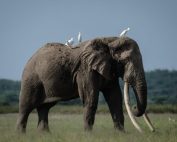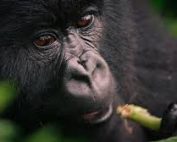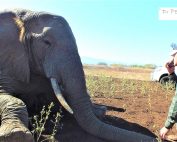A once in a lifetime luxury rail journey. Step Aboard the 5* Luxury World-Class Train Travel from Cape Town to Pretoria.
KwaZulu Natal Drakensberg Tour
Description
Welcome to the Zulu Kingdom or the South African province of KwaZulu-Natal: enticing, spectacular and fascinating multi-cultural showpiece destination flanked by the warm Indian Ocean and soaring peaks.
KwaZulu-Natal: the coastal iSimangaliso (Greater St Lucia) Wetland Park World Heritage Site – due east of pivotal landmarks in Zulu history. KwaZulu-Natal: the mountainous ‘Barrier of Spears’ uKhahlamba-Drakensberg Park World Heritage Site, adorned with Stone Age cave paintings. KwaZulu-Natal: realm of the legendary Zulu kings and steeped in living Zulu tradition. KwaZulu-Natal: timeless Indian culture in the footsteps of Mahatma Gandhi. KwaZulu-Natal: Colonial reminders shoulder-to-shoulder with icons of democracy. KwaZulu-Natal: the gateway city of Durban – pulsating and inviting fusion of East, West and Zulu motifs overlooking Africa’s busiest picture-postcard seaport. KwaZulu-Natal: expansive golden beaches interspersed with idyllic getaway coves.
KwaZulu-Natal: A magnet for thrill-seekers in the great outdoors – from wave riders to hang-gliders, and golfers to mountain bikers. KwaZulu-Natal South Coast: nature’s annual extravaganza – the unforgettable cast-of-millions Sardine Run. KwaZulu-Natal North Coast: year-round frolicking dolphins plus majestic seasonal whale migrations. KwaZulu-Natal Elephant Coast: Big Five nature reserves of international repute amid Zulu customs in KwaZulu-Natal Zululand unbroken from antiquity. KwaZulu-Natal Midlands: history-filled towns leading to adventure sports and game viewing, along with outlets for unique arts and crafts.
KwaZulu-Natal: Battlefields of yesteryear where Zulu, Boer and British now make pilgrimages of reconciliation. KwaZulu-Natal: a hotbed of live performance creativity – from progressive theatre to multi-genre music.
Itinerary
Day 1 : City Lodge Durban
Arrive at King Shaka International Airport from where you will either be met by your personal guide and transferred to your hotel; take a normal shuttle transfer to your hotel, or collect your self drive rental vehicle and drive to your hotel.
Situated on the warm Indian Ocean coastline, Durban is a sophisticated, cosmopolitan city of over three million people. This is a city where east meets west, being home to South Africa’s largest Indian community, and Africa’s busiest port.
Lush gardens, palm trees and a pool with a gazebo lend a relaxed, summer feel to the City Lodge, Durban, as well as being only 2 blocks away from the main beach and 2 minutes from Durban’s CBD. It also has a mini gym and small meeting room for guest use.
With spacious, air-conditioned rooms with twin or double beds and en suite facilities which include a separate bath and shower, this hotel offers free and convenient parking for its guests.
All rooms offer tea/coffee making facilities and have MNet and selected DSTV channels, as well as electronic safes which are large enough to accommodate laptops.
On the beachfront itself, you will find wonderful examples of traditional beadwork and basketry for sale at incredibly low prices. However do take care to only walk along the beachfront in daylight hours and to watch your belongings!
Your accommodation at the City Lodge Durban on a bed and breakfast basis.
Day 2 – 5 : Didima Resort
Check out after breakfast and head inland on the N3, past the capital of KwaZulu Natal, Pietermaritzburg, and into the midlands of KwaZulu Natal.
The Natal midlands is a fertile agricultural area of green landscapes, dominated by pastures and pine forests, and is home to one of the foremost agricultural colleges of South Africa. The Midlands Meander, the first route of its kind in the country, opened up the wonders and beauty of the interior of KwaZulu-Natal over a decade ago, and has grown into an eclectic and fascinating mix of arts and crafts, world-class restaurants and homely comforts, with a wide range of sporting environmental and historical pursuits.
About 25 kilometres beyond Pietermaritzburg stop off to visit the famous Howick Falls. Howick is in the heart of the uMngeni Municipal region and hub of the Midlands. It is known as the place of many waterfalls for it is here that the uMngeni River and its tributaries tumble down gorges and over precipices on a journey to the Indian Ocean, some 95 km to the east. The falls are very accessible to all from the summit, and for the adventurous there is a walk down to the base of the Falls known as Gorge Walk.
Known to the Zulu people as KwaNogqaza – Place of the Tall One – the 100 metre falls were first seen by European adventurers in the early 19th Century, as transport riders and wagon trains pioneered routes inland from the coast. English missionary James Archbell was granted a farm here, but the rapid increase in horse-drawn traffic soon compelled the government of the day to expropriate a portion for the establishment of a village. This settlement was duly named Howick, in tribute to the Northumberland home of then British Colonial Secretary, Earl Grey.
Howick is perhaps also infamous as the site of a concentration camp during the Anglo Boer War, as well as being the place where Nelson Mandela was eventually arrested during the apartheid era. He was, in 1996, granted the freedom of Howick.
From Howick you will continue inland, stopping off at one or two of the Midland Meander attractions, as well as for some lunch (for your own expense) along the way. After lunch head towards the mighty Drakensberg mountains and check into your overnight lodge.
Didima Resort, with a unique blend of ancient cultural heritage and modern luxury, evokes the atmosphere of San Culture within the magnificent mountain setting of Cathedral Peak valley. As you wind your way up the narrow road approaching the resort, the Drakensberg mountain splendour beckons, with sweeping panoramas of jagged mountain peaks rising from massive sandstone cliffs and dramatic cloudscapes against an impossibly blue sky. This is the setting for Didima, a luxurious mountain haven inspired by the San people incorporating San Rock Art into a uniquely themed luxury resort.
Didima’s chalets resemble caves that blend unobtrusively into the landscape whilst boasting uninterrupted views of the picturesque mountain range. The chalets are kitted out for modern day living with DSTV and microwave, but have cosy fireplaces to provide a romantic warmth to winter evenings. The central lodge provides a restaurant and bar, fireplaces throughout, an intimate lounge and a shop for groceries and curios.
Your accommodation at Didima Resort on a dinner, bed and breakfast basis.
Gate entry, community levy, rescue levy and entrance to the Rock Art Centre are included in the price.
Waken to a leisurely breakfast in the crisp mountain air, and the prospects of a host of things to do in the mighty Drakensberg.
Bordering on the upper Thukela area in the north and east, Lesotho in the west and Monk’s Cowl in the south, the Cathedral Peak section of the Ukhahlamba Drakensberg Park is 32 000 hectares in extent. Containing the magnificent Didima Valley with its many examples of San Rock art, it is a hikers’ paradise offering routes that range from a few hours to several days. The spectacular Drakensberg Mountains took their rightful place on the international tourism stage with the proclaiming of the 243 000 hectare uKhahlamba-Drakensberg Park in December 2000 as a World Heritage Site, significantly meeting the criteria for both cultural and natural properties.
Both the Zulu name uKhahlamba (barrier of spears) and the Afrikaans name Drakensberg (dragon mountains) fit the formidable horizon created by the range. A massive basaltic cap set on a broad base of sedimentary rocks belonging to the Stormberg series of 150 million years ago, the mountains are South Africa’s main watershed.
While hiking, a wide selection of plants and animals can be seen in the extensive grasslands and forest patches characteristic of this part of the `Berg.’ Overhead the effortless flight of a Bearded vulture (Lammergeyer) while closer at hand Malachite sun birds flash from protea to protea, a noisy troop of baboons bark at the intruders in their domain and a family of Mountain reedbuck display their white tails as they race up a nearby slope.
Walks and hikes can be taken from Cathedral Peak Hotel but if you are not staying at the hotel it is necessary to phone in advance to find out when and which walks have been organised. Alternatively you can hire a guide. Hiring a guide for longer walks and hikes is recommended. Other walks and hikes can be arranged at the Parks Board office where they will assist you in planning your outing. Maps for all walks and hikes are available from the Parks Board office as well as the hotel.
For more than 4 000 years these mountains, with their innumerable caves and overhands, were home to the indigenous San people, who created a vast body of rock art – the largest collection in Africa.
Living in the sandstone caves and rock shelters of the Drakensberg’s valleys, the San made paintings described by the World Heritage Committee as “world famous and widely considered one of the supreme achievements of humankind … outstanding in quality and diversity of subject and in their depiction of animals and human beings … which throws much light on their way of life and their beliefs”.
In describing the park’s natural heritage, the committee notes its “exceptional natural beauty in its soaring basaltic buttresses, incisive dramatic cutbacks and golden sandstone ramparts. Rolling high altitude grasslands, the pristine steep-sided river valleys and rocky gorges also contribute to the beauty of the site.
A visit to the Didima San Art centre leads a visitor along the journey of discovery using the significance of the eland in San culture as a theme that threads its way through the experience. The theme of the eland is first introduced in the innovative display hall. After the introduction to the fascinating culture and lifestyle of the San, the visitor is led into a small cave like room for a time of traditional fireside story telling, before moving on to the cultural auditorium for a screening of the inspiring and provocative audiovisual presentation. The valley of the eland multimedia show, which plays for quarter of an hour, explores the truth, myth and legend surrounding the rock art imagery of the uKhahlamba Drakensberg. As the house lights fade in at the end of the show, an exact scale production of the well-known panel of Botha’s shelter in the Didima Gorge emerges. In the quite afterglow of this presentation visitors can take some time to view the overhang at leisure before exiting into the lower display area where they are introduced to the Ndumeni Craft Centre and Coffee Shop.
With more than 121 resident species, bird watching can also be an all absorbing occupation in this area, whilst fly fishing can be enjoyed in many of the mountain streams out of the park itself. Horse back riding and other activities based at the local hotel ensure that nobody ever has an opportunity to be bored.
Whether your aim is a relaxed holiday, a romantic mountain getaway or some time spent in adventurous pastimes, the Central Drakensberg has a host of activities on offer.
Day 5 : transit
Check out after breakfast and return to King Shaka International Airport, or continue on your travels in conjunction with another of our South African tours.
Photos
Included
Excluded
Questions?
FAQ's
Our approach to travel is defined by our motto “Constantly in Pursuit of Excellence”, as we strive to provide top quality tour or trek options.
We’d love to hear from you, so please contact us with your questions, comments or suggestions through our Support System and we will get back to you as soon as possible. Please also review our FAQ’s to save you time in case your question has already been answered.
















